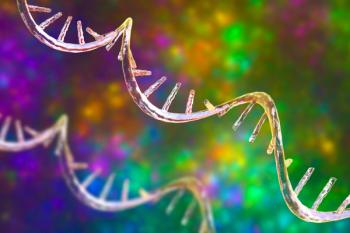
Using Site-Specific Conjugation for Homogenous Bioconjugates
Solutions to circumvent heterogenous mixtures of antibody-drug conjugates and to ensure uniform drug-to-antibody ratio were discussed at a recent Catalent Applied Drug Delivery Institute symposium.
The location of the conjugation site on an antibody-drug conjugate (ADC)-i.e., where the cytotyoxic drug payload is attached to a monoclonal antibody (mAb)-is known to affect the pharmacokinetic, safety, and efficacy profile, said David Rabuka, PhD, global head of R&D, chemical biology at Catalent Pharma Solutions during Catalent Institute’s Applied Drug Delivery meeting, held on March 24, 2016 at the UCSF Mission Bay campus. Rabuka’s talk at the meeting covered how to manipulate conjugation in ADCs and make drug ligation more selective.
Conventional protein modification chemistries produce a heterogenous mixture of products with varying levels of modifications, said Rabuka, and some of this product can be underconjugated overconjugated, or not conjugated at all. In other words, there is very limited control over site of conjugation or stoichiometry in conventional ADCs. This means that conventional ADCs can have pharmalogic liabilities due to the fact that they contain species with variable potencies, variable pharmacokinetic properties, and variable toxicities.
Rabuka stressed that site-specific conjugates are a better option to retain control of the ADC, and spoke of the use of Catalent’s SMARTag technology to generate ADCs with lower risk of toxicity and better efficacy. This ADC control is achieved through mAb position engineering at “best performing” tag sites.
Through use of Catalent’s GPEx cell-line expression system, antibody-producing cell lines are engineered to overexpress a formylglycine-generating enzyme (FGE). The FGE recognition sequence can be deliberately positioned anywhere in the protein sequence, and during the protein translation process, this sequence is recognized by FGE to generate a formylglycine residue with a reactive aldehyde group (a tag) to yield a SMARTag mAb. Following expression and purification of the SMARTag mAb, the mAb can be chemically coupled to a drug payload in a stable manner through Catalent’s proprietary ligation technology. Attachment of the payload occurs only at the formylglycine site. The insertion of the tag itself, said Rabuka, does not affect immunogenicity.
According to Catalent, it has demonstrated preclinical proof of concept for the SMARTag technology on two internal programs targeting HER2 and CD22, and is actively working with a number of partners on the SMARTag technology, both for the site-specific ADC application as well as novel bioconjugate applications. One specific partner is Roche-Roche
Newsletter
Stay at the forefront of biopharmaceutical innovation—subscribe to BioPharm International for expert insights on drug development, manufacturing, compliance, and more.




